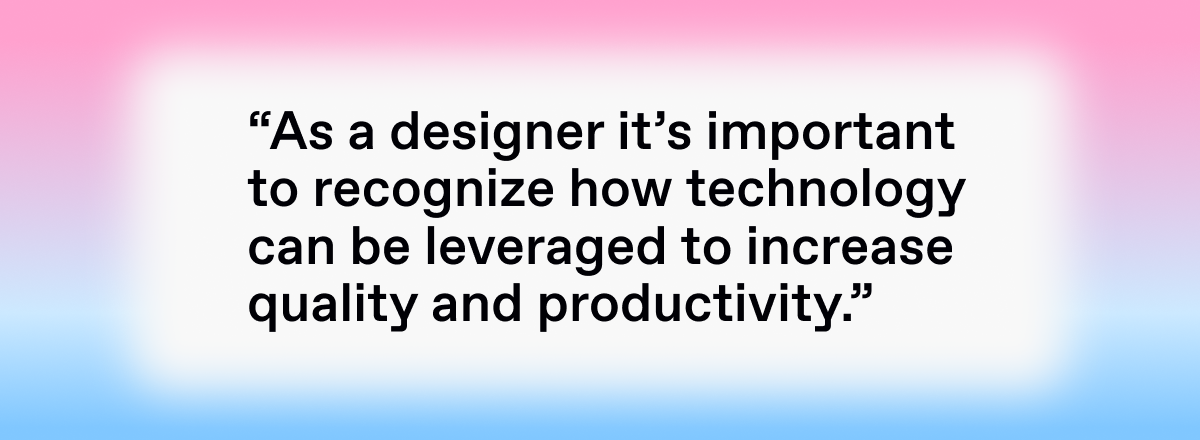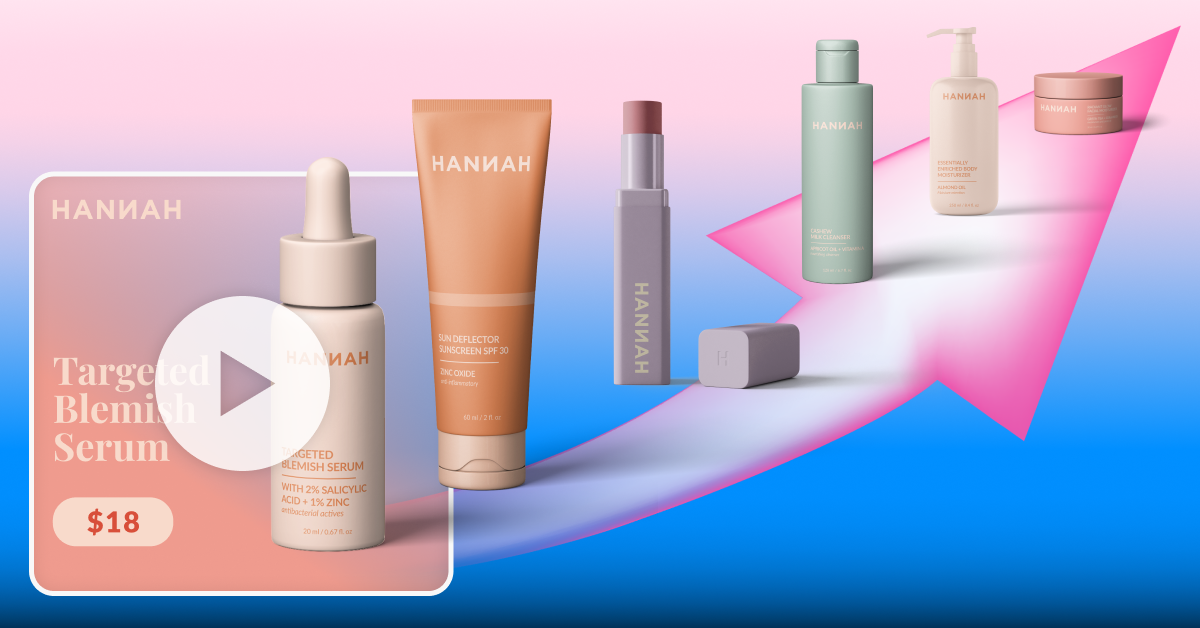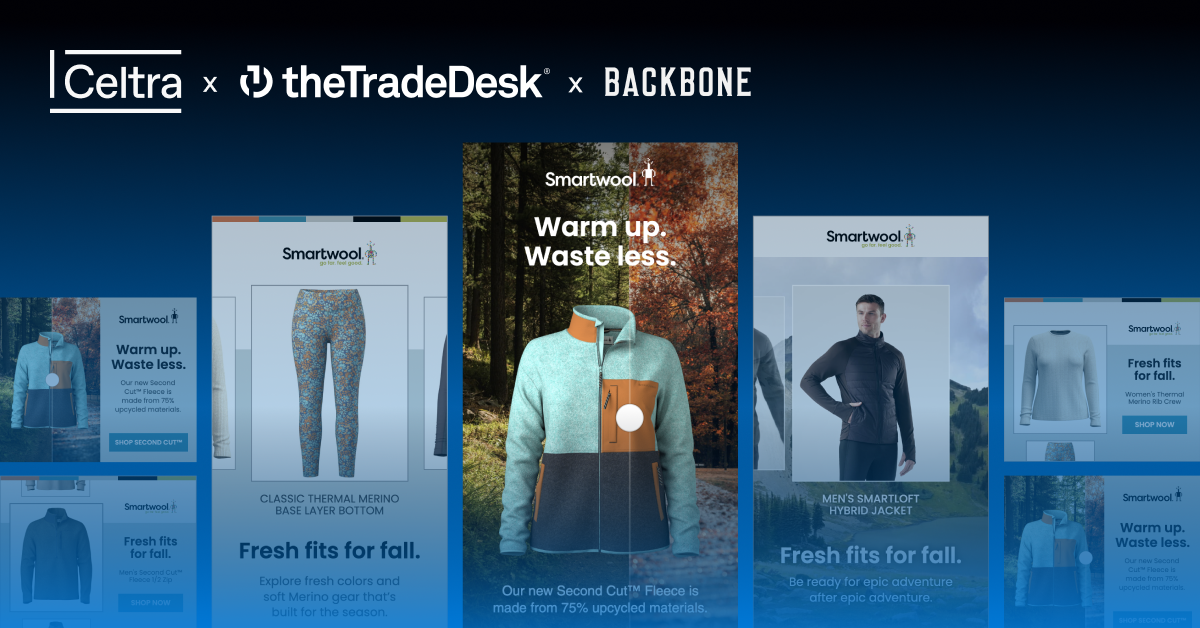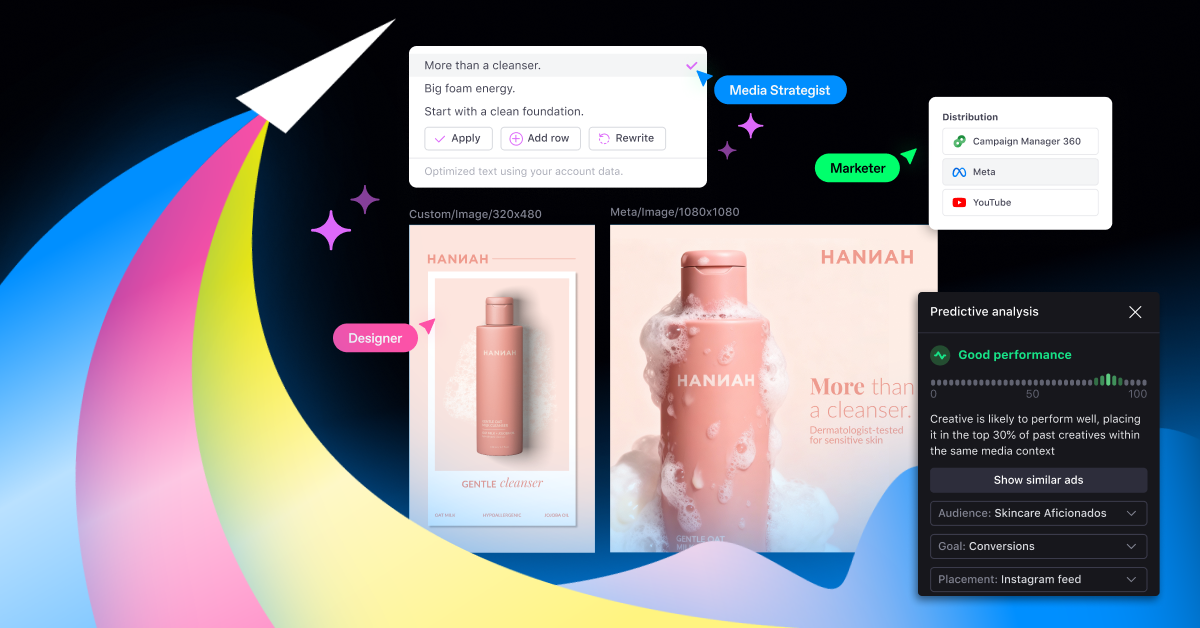I began my career as a freelance animator and motion graphics designer, where I often supported video campaign creation for media networks. Week after week, I devoted my time to developing video assets, but after a few years, I realized how countless hours of my work would go live online or on air for a few minutes, only to then vanish into obscurity. Like many others, the ceaseless cycle of content creation in the media realm eventually took its toll. I often thought that there must be a more efficient way of producing video content but it had got to the point where I, (as is perhaps the same for all designers) found little to no enjoyment in making hundreds of different versions of the same video file.
Modularity as a path for video creation
When the opportunity arose for me to transition into a full-time motion designer, I was finally able to pivot. Not only did this entail crafting commercial ads for the company, but it also required me to construct templates and collaborate closely with the engineering team to advance the product itself. My involvement extended to the successful launch of two distinct video products—one catering to consumer needs and the other targeting businesses. The secret to this innovation lay in simplifying the process of dragging and dropping images and videos into pre-designed templates. These templates, with the option to adjust colors and timing, could yield an extensive array of creative outputs. Even the slightest modifications could render these videos unrecognizably distinct, creating an endless amount of postable content to increase engagement with brands. This streamlined approach substantially minimizes the time required for minor content adjustments. As a result, I was able to channel my mental energy towards the creative production process, free of the burden of mundane modifications.
As a designer, it’s important to recognize how technology can be leveraged to increase quality and productivity – the effort and time spent previously on manually editing thousands of adaptations can now be used to finesse my main composition.

Why designers need to keep scalability in mind
Fast forward to now, where as a product manager, I can take my years as a motion designer- the workarounds, the hacks, and all the acute pains of scalable video production, and apply them directly to Celtra’s creative automation product.
I’ve worked with media and marketing teams for fifteen years, and from my fish-eye perspective of the market and its demands, I have definitely seen a shift. Gone are the days when generic, one-size-fits-all advertisements would suffice. Today’s consumers expect content that speaks directly to their needs, interests, and preferences. Variable content allows designers to tailor ad components such as headlines, images, and offers to align with the unique characteristics of each viewer. This personal touch creates a sense of connection and relevance, fostering a deeper engagement with the brand. The ability to deliver personalized content leads to higher conversion rates. Users are more likely to take action When they see content that directly addresses their pain points or desires. By easily creating this content at scale a designer can quickly A/B test any content. The heavy lifting no longer exists in the creation process itself. I can analyze the data to see which ads have higher engagement and quickly make adjustments at a large scale.
From designer to product manager, here are the top steps I’ve learned to begin designing with Variable Content:
1. Understand your audience
The first step in designing variable video content ads is understanding your target audience deeply. Utilize data analytics and market research to uncover demographic information, patterns, and preferences. By segmenting your audience, you can create different variations of ad content that resonate with specific groups.
2. Define dynamic elements
Identify the components within your ad that can be customized. These elements could include headlines, images, product recommendations, or even entire sections of the ad. Things that can scale easily within those elements include colors, fonts, messaging, and language. While personalization is key, maintaining a cohesive brand identity is equally important.
3. Create design templates
Develop a range of animated templates that can accommodate different variations of content. These templates should be flexible enough to accommodate varying lengths of headlines, different images, and even changes in layout based on the amount of content being displayed. This approach streamlines the process of content integration and design adjustments.
4. Things to keep in mind
Considerations to bear in mind revolve around timing, which holds paramount importance when designing scalable video content. Replacing video elements of varying durations can lead to instances of blank frames. Moreover, it takes a considerably longer span to visually process a single word as opposed to absorbing a paragraph’s worth of text. Hence, it’s crucial to acknowledge that optimal outcomes arise when substituting content of comparable length, size, and duration. This forms a focal point of our ongoing efforts, as we actively strive to devise automated solutions to address this challenge.
5. Test and optimize
As with any marketing strategy, testing is essential. A/B testing different variations of the ad will help identify what resonates most with different audience segments. Continuously monitor and analyze the performance metrics to fine-tune your designs and refine your content customization strategy.
6. Maintain consistency
While variable content allows for personalization, maintaining brand consistency is vital. Designers should ensure that the ad still reflects the brand’s identity, colors, fonts, and overall style even with varying elements. This consistency builds trust and recognition among the audience.
Having transitioned from a designer to a product manager, I can see the incredible potential that creatives and designers have to integrate technology that makes their workflow sustainable and scalable. Technology can significantly assist creative productivity, from boosting efficiency to alleviating the cumbersome process of creating individual ads. More importantly, time saved equals more opportunity for designers to gear their strategic and creative energy towards more meaningful goals.
Ready to start with Celtra?
Combine all these features to add value to the user experience and open up new possibilities for businesses and content providers to engage audiences effectively and efficiently with Celtra.






